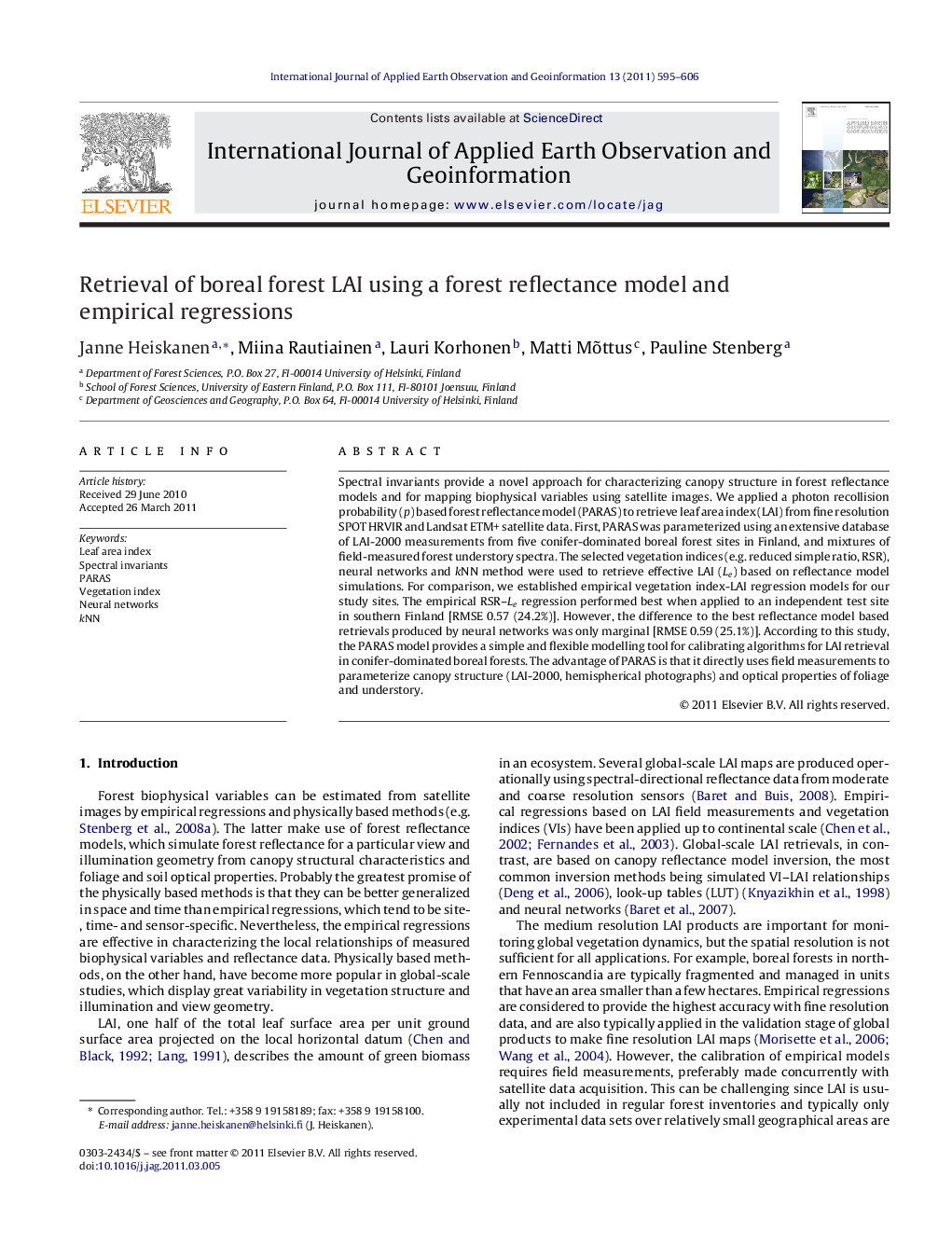| کد مقاله | کد نشریه | سال انتشار | مقاله انگلیسی | نسخه تمام متن |
|---|---|---|---|---|
| 4465238 | 1621849 | 2011 | 12 صفحه PDF | دانلود رایگان |

Spectral invariants provide a novel approach for characterizing canopy structure in forest reflectance models and for mapping biophysical variables using satellite images. We applied a photon recollision probability (p) based forest reflectance model (PARAS) to retrieve leaf area index (LAI) from fine resolution SPOT HRVIR and Landsat ETM+ satellite data. First, PARAS was parameterized using an extensive database of LAI-2000 measurements from five conifer-dominated boreal forest sites in Finland, and mixtures of field-measured forest understory spectra. The selected vegetation indices (e.g. reduced simple ratio, RSR), neural networks and kNN method were used to retrieve effective LAI (Le) based on reflectance model simulations. For comparison, we established empirical vegetation index-LAI regression models for our study sites. The empirical RSR–Le regression performed best when applied to an independent test site in southern Finland [RMSE 0.57 (24.2%)]. However, the difference to the best reflectance model based retrievals produced by neural networks was only marginal [RMSE 0.59 (25.1%)]. According to this study, the PARAS model provides a simple and flexible modelling tool for calibrating algorithms for LAI retrieval in conifer-dominated boreal forests. The advantage of PARAS is that it directly uses field measurements to parameterize canopy structure (LAI-2000, hemispherical photographs) and optical properties of foliage and understory.
► PARAS forest reflectance model was tested for LAI retrieval from satellite data.
► The model produced nearly as accurate retrievals as empirical regressions.
► PARAS offers a flexible tool for calibrating LAI algorithms in boreal forests.
Journal: International Journal of Applied Earth Observation and Geoinformation - Volume 13, Issue 4, August 2011, Pages 595–606